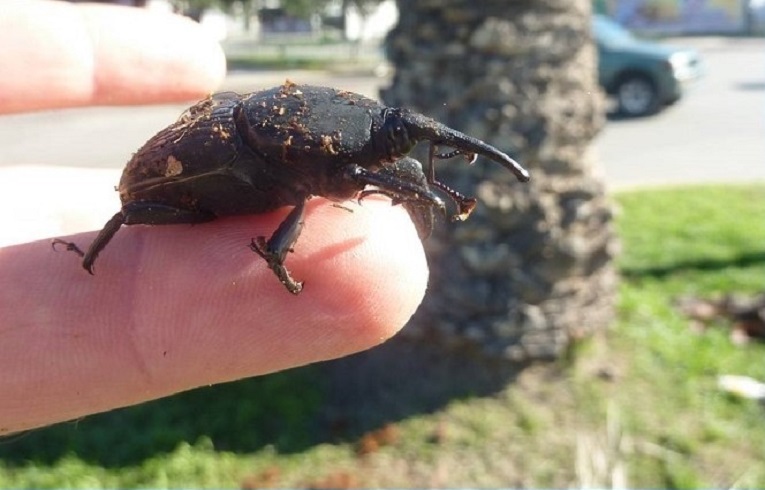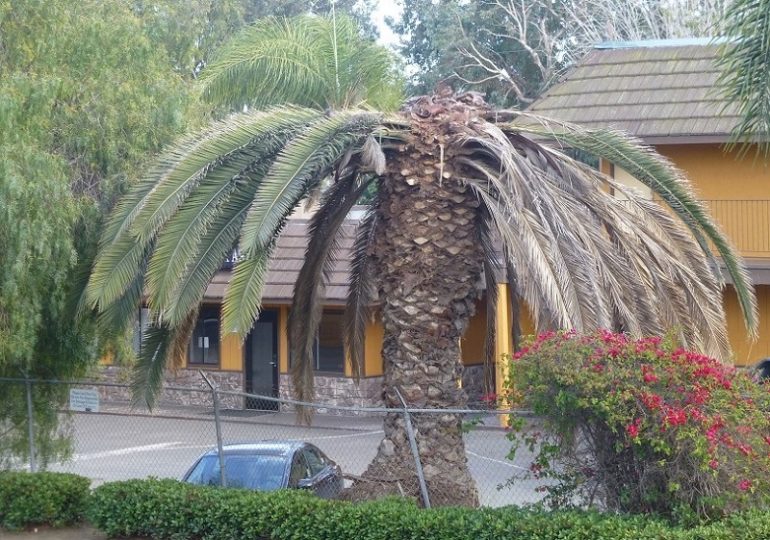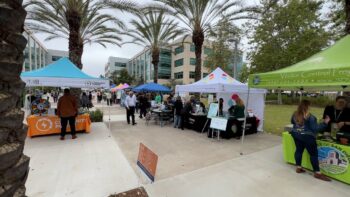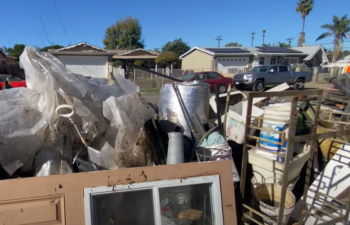They’re 1 ½ to 2 inches long, jet black, with long snouts and a deadly appetite for one of Southern California’s biggest icons — palm trees.
In September, South American palm weevils were determined to have killed palm trees in San Ysidro.
Now, numerous groups and agencies — County, state, University of California, ornamental palm and date industry officials, cities and others — are all hoping the public can help find this invasive pest before it can wreak havoc.
County Agriculture Commissioner Ha Dang said it’s easy for people to help.
All they have to do, if they think they’ve found weevils, or trees that look like they’re sick and dying from weevil infestation, is report it on the UC Riverside’s South American palm weevil web survey site.
The survey lets people type in what they’ve seen, when they saw it, their contact information, photos if they have them and even GPS coordinates for researchers to follow up.
“It’s very important that we determine how far this pest, the South American palm weevil, has spread,” said County Agriculture Commissioner Ha Dang. “Anyone who sees a large black beetle with a long, pronounced snout should report it.”
South American palm weevils not only threaten wild palms and the ones people have planted on their private properties, but also the county’s multi-million ornamental palm and date palm industries.
South American palm weevils prefer to infest and destroy Canary Island date palms, sago palms, date palms, coconut palms, and African oil palms. But they’ve been known to feed on 35 kinds of plants, even citrus and avocado.

The adult South American weevils don’t create the most damage. Their large, fatty, orange-brown wormlike larvae do. Adult beetles feed on fronds and bore into palms to lay eggs. The larvae eat the palms from the inside out, typically in the crown of the tree, which makes it impossible for the tree to grow new fronds and causes it to die from the top down. The South American palm weevil can also transmit another palm-killer, the red ring nematode — which has not been found in California to date.
Agriculture officials said that despite the beetle’s large size, it’s often difficult to detect weevil infestations because they live inside palms. However, they said that infested palms will often suffer notched new fronds or damage to the top of the crown. In advanced stages of infestation, the tops of palms can droop and collapse.
Originally from South America, Central America and parts of Mexico, the South American palm weevil has been found and has killed palms in Tijuana, Mexico since 2010. The number of palms that have been killed or damaged in San Diego County has not been officially determined.
For more information about South American palm weevils, including pictures and symptoms of palm-tree infestations, go to UC Riverside’s Center for Invasive Species Research, or the United States Department of Agriculture’s Plant Health and Inspection Service.






